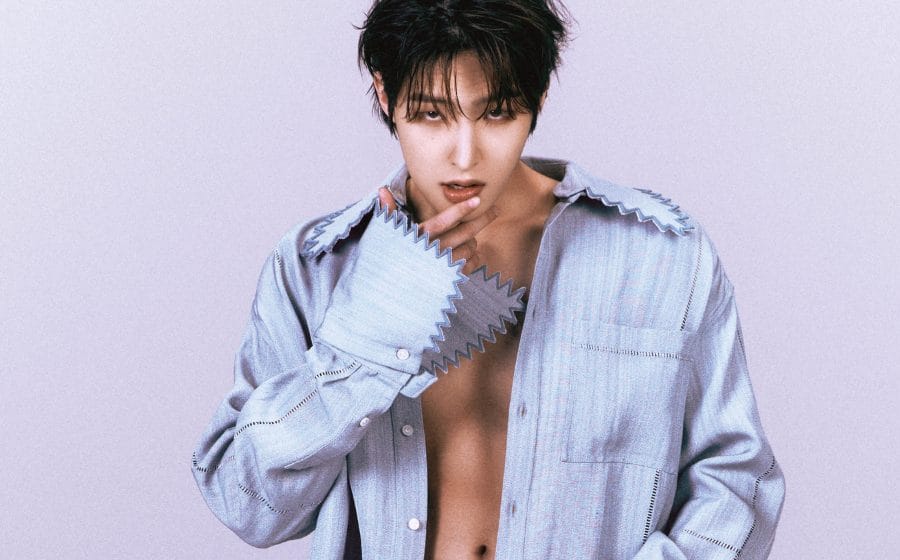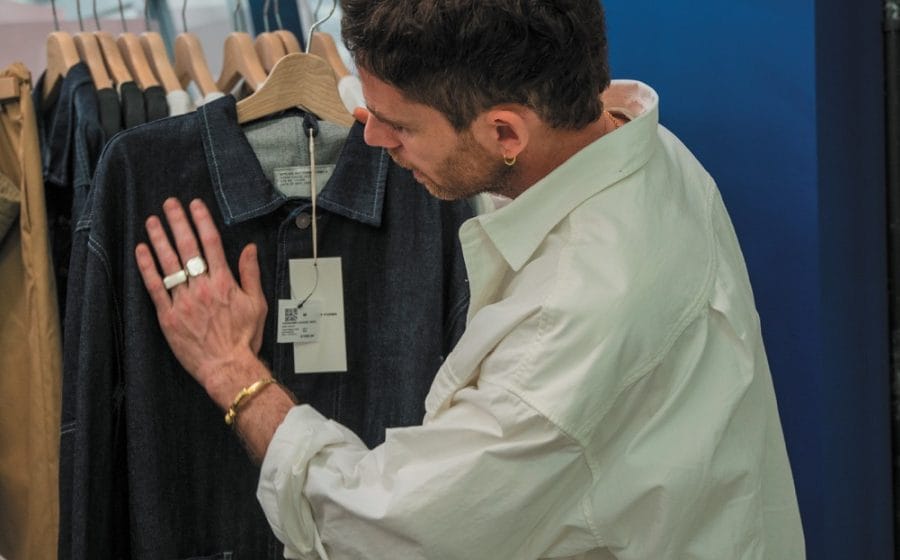When Japanese label DRESSCAMP made its Spring/Summer 2003 debut with celebrated designer Toshikazu Iwaya at the helm, it made headlines for using vivid colours and prints in a style not seen before in Tokyo collections. Iwaya’s talent gained quick recognition; in the year after DRESSCAMP’s debut, he received the Best Newcomer Award at the Mainichi Fashion Grand Prix, the Shiseido Incentive Award, as well as the Moët & Chandon New Designer Award. DRESSCAMP’s fashion clout can be seen from its many collaborations with top names such as Piaget, MCM, Timberland and most recently, US apparel label Dickies. Easily one of the top Japanese labels today, no trip to Tokyo is complete without a pilgrimage to DRESSCAMP’s Aoyama flagship. In this interview, Iwaya shares with us his vision for the brand and hints at the possibility of a presence in Singapore sometime in the (hopefully near) future.
Below: Toshikazu Iwaya
Tell us what the DRESSCAMP brand stands for.
I am trying to establish an image of freedom for the brand. About one, two, three hundred years ago, men’s fashion had freedom of design. I am integrating this traditional concept of freedom and applying it to the modern context in my designs.
Are there plans to stock the brand in Singapore?
Yes, we are thinking about it.
Why do you think DRESSCAMP will work in the Singapore market?
The focus of DRESSCAMP is not only Singapore but the Asian market as a whole. Singapore, of course, is a critical market in Asia. I think the freedom expressed in my designs would appeal to Asian men.
What is the most rewarding aspect of your job?
I can’t say which aspect of my job is most rewarding because I don’t see myself as having succeeded yet…I have not done what I would like to do. As a designer I am always evolving; the day that I am satisfied that I have done everything I want to do, I will quit my job!
What do you think makes Japanese fashion stand out from that of other fashion capitals like Paris, Milan or New York?
Japan has everything. It is a combination of European and American styles, as well as Japanese style. The fact that Japanese fashion has all those elements makes it unique.

Your designs have often been described as dramatic, flamboyant and OTT. What is your response to that?
Well, I don’t mind such a perception of DRESSCAMP, but beyond the bright surface there is a certain stoicism…I don’t think the media sees that. I have a very strong image for my fashion and I want to establish this strength in my designs. It may look bright and vivid but there is a structural element in my designs. I care particularly about how it looks, not just the superficial aspect but also the construction.
Tell us more about your Fall 2014 menswear collection.
The collection may look classic but it actually has a lot of casual aspects. We are collaborating with the US workwear label Dickies for some pieces and it is a versatile collection that can take you from day to night.
What advice would you give to emerging young designers?
Have a concrete image and a concrete goal you want to achieve. You must be focused and have a clear concept of what you want to design.

Are there designers you admire?
I respect Karl Lagerfeld and Rei Kawakubo a lot because they have been in this industry for such a long time; they are two of the top runners in the industry. They are always coming up with new ideas and reinventing themselves. I respect them not only for their designs but also for the way they conduct their business—how they are attracting new clients, how they sell and how they present themselves to the clients.
Where do you find inspiration?
I can say I find my inspiration from travelling, but there are many aspects to it. When I visit a city, I try to go to a place where I can see and feel the history of that city. There is always a rich history beneath the surface; you can see the depth of this history in the complications of the architecture and design. Contemporary buildings can be built in three months, but all the historical buildings took 10, 20 years or even more to build. I like to feel the history behind them…the feelings of the people who built them. I admire the beauty in the complexity of the designs.
One last question: June is our summer travel issue. Tell us how and where you will be spending your summer.
Well, I have not decided yet…I don’t have a place where I want to go more than anywhere else but I want to go somewhere warm and where I can get a good tan! Summer in Japan is not like Singapore where it continues throughout the year.
So would you be spending summer in Singapore then?
I wish I can come back!
Below: Dresscamp’s flagship store in Aoyama, Tokyo








